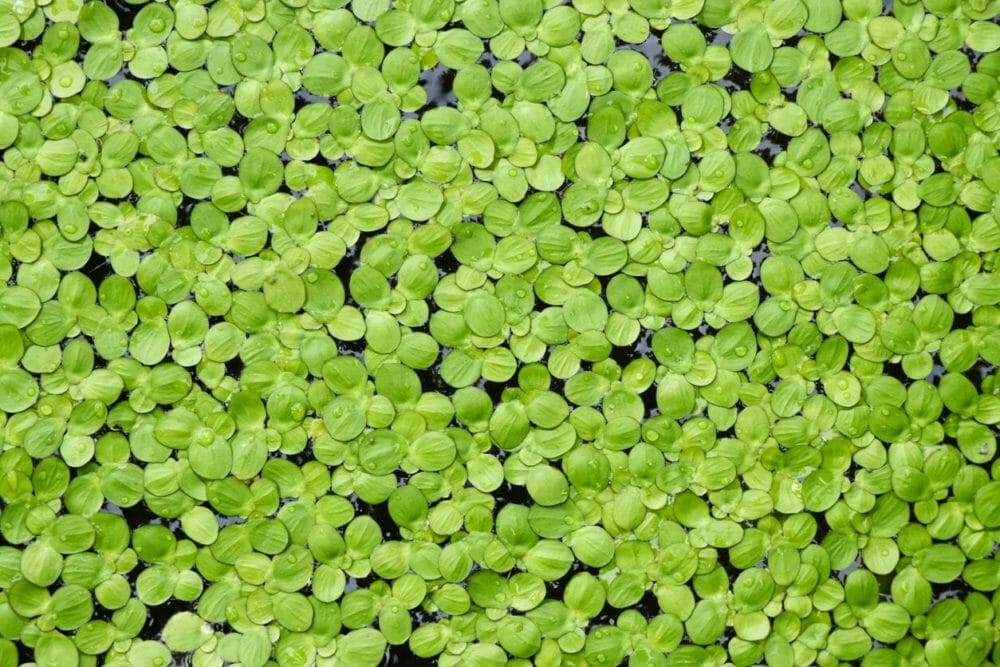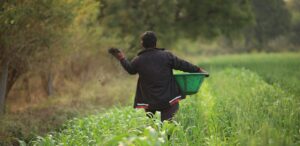There is huge scope for improvement in the farming of aquatic crops. Historically, these were overlooked in favor of soil-based staples. So most startups diving into the aquatic crop world need to wrestle with a legacy of incomplete plant science and a dearth of harvest data compared to the arable crops we know well like wheat. For certain specific species of macro-algae or micro-algae things are a little better, largely thanks to government-backed incentives from the 1970s for biofuels. Still, not all aquatic roads lead to algae. For instance, there are a few ambitious ventures looking at novel ways to grow duckweed.
The popular image of duckweed, which is also known as lemna, is that of a perilous nuisance on ponds and lakes. This perennial aquatic plant can rapidly spread like a green carpet across a freshwater surface, choking off oxygen to the fish or algae living beneath. But AgFunder investor Quinten Eggink reckons there’s a clear positive side to that sort of growing capability in a controlled environment farming context. “The best thing about duckweed is that it’s rich in protein and grows incredibly fast,” he said. “It can double in biomass every two days.”
One company looking to harness duckweed’s protein potential is DryGro (CO2i), a UK-based startup that studies and cultivates high-protein varieties, with a core aim of providing a sustainable animal feed alternative to soy. The team is designing ways to grow Lemna in a sub-saharan climate, building six pilot structures in Kenya. From outside, all you can see are semi-cylindrical structures that let the sunlight in but protect the lemna from strong winds or downpours of rain. Inside are swimming pool structures for certain varieties to float through and grow, with a closed loop water filtration and recycling system, sensors to regulate nutrient levels and growth patterns, and a harvesting system that allows for daily extraction. Declining to go into further details of the design, CTO Brendan Cawley said the team was working to further automate each aspect of the process, which would require combining real-time data from satellites and onsite sensors.
The company also revealed to AFN this week that it had closed the last tranche of its Series A round with an investment of £2 million from the Becht Family Charitable Trust (BFCT). This follows an earlier tranche of £1.8 million, reported here, bringing DryGro’s total Series A raise to £3.8 million ($4.71 million). “We were a little bit fortunate on the timing,” DryGro COO Kate Jarvis said of the funding round, describing how deal-making discussions were already “pretty advanced” before Covid-19 went global.
Zooming in on duckweed from space
To build up its best practices and rapidly gather growing data, the team has found a few aerospace partners to help. Starting this month, the company will embark on a €1.5 million ($1.6 million) project with the European Space Agency, of which ESA and the UKSA will provide €761k in funding. The project draws together the engineering firms RHEA Group and BuildX Studio, as well as input from Hyper Collective, an agricultural IoT and data analytics service provider. Together, they will coordinate Earth observation and IoT systems data to monitor DryGro’s controlled-environment system.
This system is still under construction at its pilot facility in Naivasha, Kenya. But once the growing process starts over the summer, the data will be collected, enabling the sort of feedback loop that can foster improved growing conditions, boosting yield and protein content. Cawley, the CTO, noted that the satellite data would “troubleshoot” the data from on the ground sensors, providing weather forecasts, along with measurements of ground heat and moisture levels of the surrounding area that could help safeguard as controlled an environment as possible.
According to Eggink, one clear challenge for duckweed producers like DryGro will be how to turn their growing process into something valuable with a defensible tech angle. One example he mentioned to AFN is extracting inherent proteins like Rubisco, an approach taken by the B2B Lemna producer Plantible. Longer term, he said, there might be promising possibilities in ag biotech here, if the regulatory door opens to genetically engineering duckweed to produce specific proteins.
Lemna versus soy
That said, another challenge could be simply down to cost and scale. If DryGro is going up against soy it will have to win clearly on production and ecological comparisons. Soy did not become one of the four largest crops in the world by being costly; and it shows little sign of being elbowed aside. The FAO has predicted that by 2050 land for soy production is set to increase more than any other crop. However, this also means soy will contribute even more significantly to global deforestation and biodiversity loss, an environmental cost that could slow its growth and rouse a public anti-soy backlash.
Lemna could be one way to buck that 2050 deforestation trend, the DryGro team hope, as a direct substitute for soybean meal in animal feed. The team say its growing system could produce animal feed protein eight times faster than traditional soy meal production — and using 99% less water because all water used with duckweed can be recyclable.
DryGro’s production system therefore requires far less land than soy, the team contend, and it is not vulnerable to outdoor weather conditions; it can be built in most locations that have ample sunlight and inexpensive land.
But the choice of Kenya comes with risks in light of the spread of Covid-19. On an operations level, Jarvis remained upbeat despite travel restrictions mean senior management would not be able to visit the pilot facility until at least October. As with other companies, she said, lockdowns had made her company realise how much could in fact still be done remotely, and how fundamental it was to make sure all employees still working at the facility had the right training to make decisions on the ground, and the appropriate health insurance.
Other risks in Kenya included the largest plague of locusts in 70 years, which hit other regions, but would have a combined economic and political impact alongside Covid-19 — a situation Jarvis said her team was monitoring closely.





